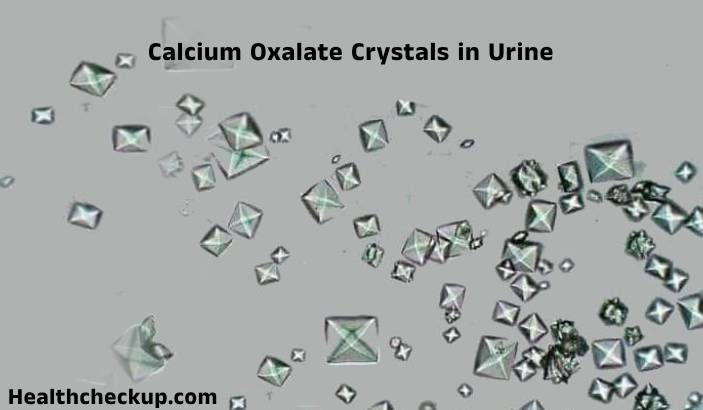Calcium oxalate crystals in urine can indicate various health conditions, ranging from dietary imbalances to serious disorders like kidney stones. This comprehensive guide explores the causes of calcium oxalate crystals in urine, methods for diagnosis, the normal range, and available treatments to manage this condition effectively.
Causes of Calcium Oxalate Crystals in Urine
- Dietary Factors:
- High Oxalate Intake: Foods rich in oxalate, such as spinach, nuts, and rhubarb, can lead to increased oxalate in urine.
- Low Calcium Intake: Calcium binds to oxalate in the intestines, reducing oxalate absorption. Low calcium intake can increase urinary oxalate.
- Dehydration:
- Insufficient fluid intake can concentrate urine, leading to a higher risk of calcium oxalate crystal formation.
- Metabolic Disorders:
- Primary Hyperoxaluria: A rare genetic condition leading to excessive oxalate production.
- Renal Tubular Acidosis: Causes increased calcium in urine, contributing to crystal formation.
- Medications:
- Certain medications, like loop diuretics and some anticonvulsants, can increase calcium oxalate crystal formation.
- Underlying Conditions:
- Kidney disorders, gout, or chronic urinary tract infections can promote calcium oxalate crystal formation.
Diagnosis of Calcium Oxalate Crystals in Urine
- Urinalysis:
- The primary method to detect calcium oxalate crystals in urine. A sample is examined under a microscope for the presence of crystals.
- 24-Hour Urine Collection:
- Measures the total amount of oxalate and calcium excreted in urine over 24 hours, providing a comprehensive view of urinary composition.
- Imaging Tests:
- Ultrasound or CT Scan: Used to detect kidney stones or other abnormalities in the urinary tract.
- Medical History Review:
- Healthcare providers review dietary habits, medication use, and underlying conditions to understand potential causes.
Normal Range for Calcium Oxalate Crystals in Urine
- Normal Presence:
- Some calcium oxalate crystals in urine can be normal, especially with dietary variations.
- Excessive Crystals:
- An increased number of crystals may indicate a higher risk of kidney stones or other urinary tract disorders.
| Parameter | Normal Range |
| Urine Oxalate | 10-40 milligrams per day |
| Urine Calcium | 100-300 milligrams per day |
Treatment for Calcium Oxalate Crystals in Urine
- Dietary Adjustments:
- Reduced Oxalate Intake: Limiting high-oxalate foods like spinach, rhubarb, and nuts.
- Increased Calcium Intake: Consuming calcium-rich foods or supplements to bind with oxalate in the intestines.
- Hydration:
- Increasing fluid intake helps dilute urine, reducing the risk of crystal formation and kidney stones.
- Medications:
- Thiazide Diuretics: Reduce calcium in urine, lowering the risk of stone formation.
- Potassium Citrate: Helps prevent stone formation by reducing urine acidity.
- Managing Underlying Conditions:
- Addressing metabolic disorders, kidney diseases, or other health issues contributing to crystal formation.
- Regular Monitoring:
- Regular urinalysis and follow-up with healthcare providers to ensure effective management and prevention of complications.
Risks Associated with Calcium Oxalate Crystals in Urine
- Kidney Stones:
- Calcium oxalate crystals can form kidney stones, leading to severe pain, urinary blockages, and infections.
- Urinary Tract Infections:
- Crystals can irritate the urinary tract, increasing the risk of infections.
- Chronic Kidney Disease:
- If left untreated, repeated stone formation can damage kidney tissue, leading to chronic kidney disease.
If calcium oxalate crystals are detected in urine, discussing dietary adjustments, medications, and underlying health conditions with healthcare providers is essential for creating a tailored treatment plan. Proper hydration, dietary changes, and regular monitoring can significantly reduce the risk of kidney stone formation and associated complications, ensuring better urinary tract health and overall well-being.
I specialize in writing about health, medical conditions, and healthcare, drawing extensively from scientific research. Over the course of my career, I have published widely on topics related to health, medicine, and education. My work has appeared in leading blogs and editorial columns.









